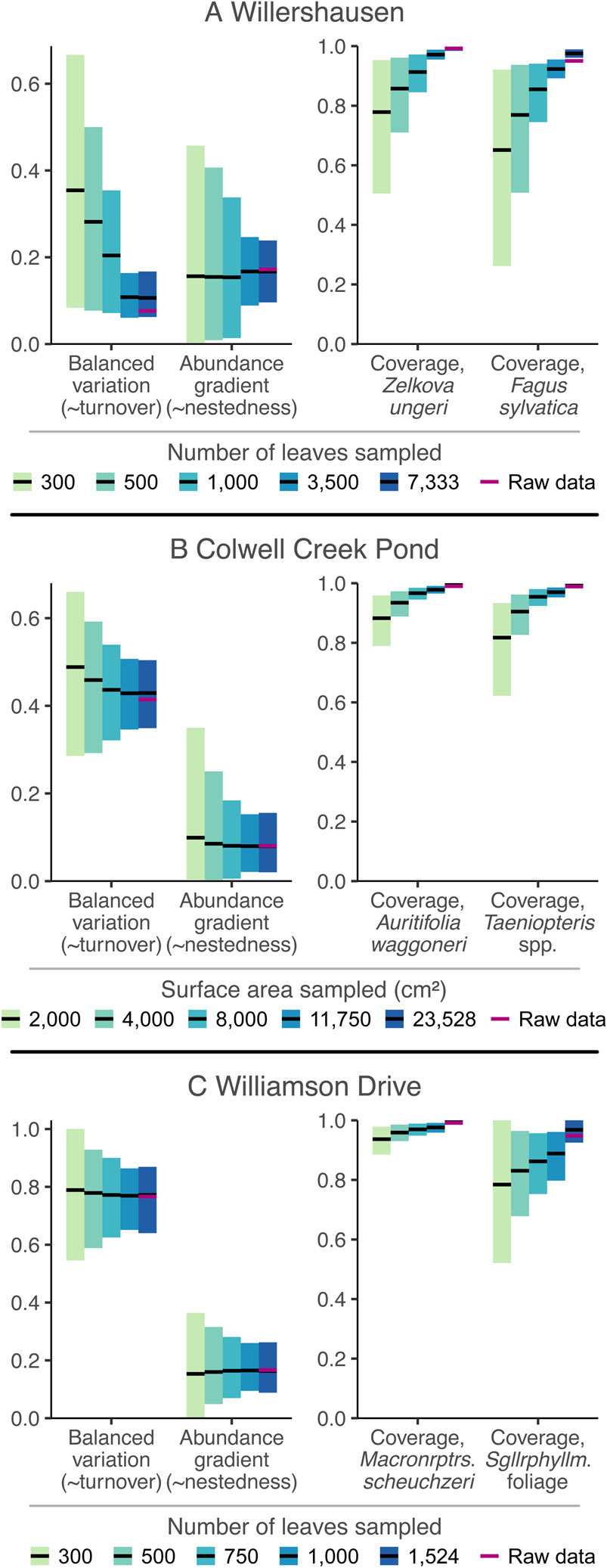This article published with an error in the legend of Figure 6 (Schachat et al. Reference Schachat, Payne and Boyce2023). In the bottom of the three panels, the labels “1,000” and “750” are swapped from their proper positions. The correct figure appears below.

Figure 6. Mean values and 95% confidence intervals for beta-diversity metrics generated by resampling and subsampling data for the two most abundant host plants from (A) Willershausen, (B) Colwell Creek Pond, and (C) Williamson Drive. At the highest sample sizes, represented in dark blue, the data were resampled rather than subsampled. Macronrptrs. scheuchzeri = Macroneuropteris scheuchzeri; Sgllrphyllm. = Sigillariophyllum.
The authors apologize for this error.




